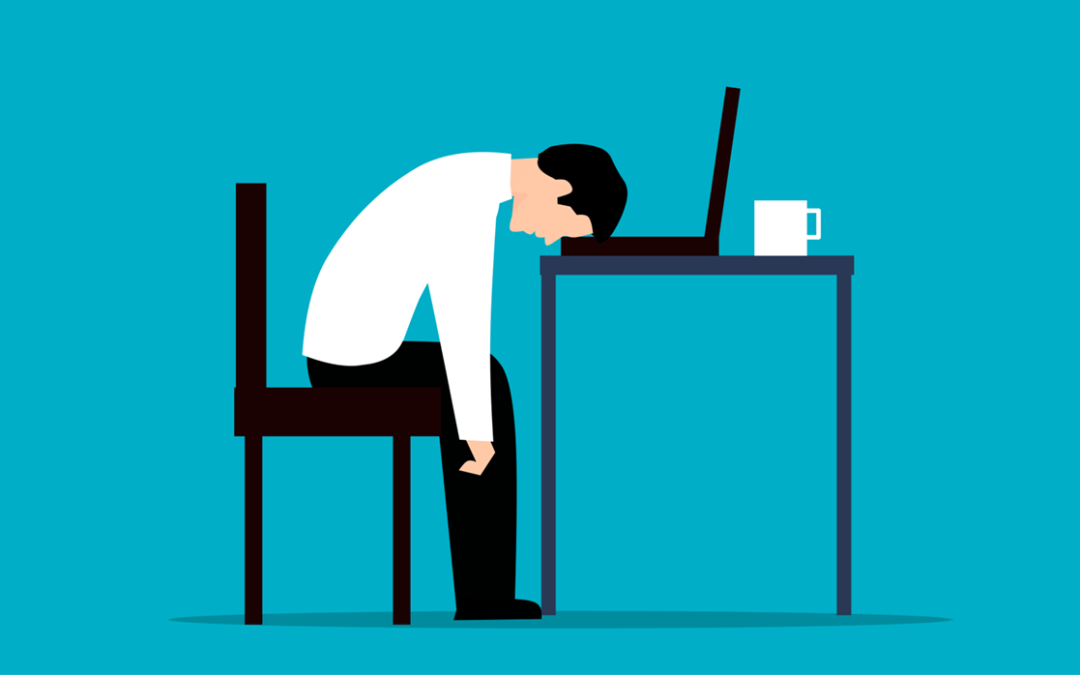During the COVID pandemic, there has been a significant increase in reports of people feeling burned out as a result of the changes we have made to our daily lives and routines. Burnout is a term that has been grabbing headlines in the news and on social media platforms, but what exactly is burnout and how can I recognize it?
Burnout is a state of physical and mental exhaustion that is frequently related to chronic work (and school!) stress. Some signs and symptoms of burnout include:
- Feelings of disillusionment, apathy, and detachment from both personal and professional activities. This can include activities that you typically would enjoy!
- A reduced sense of accomplishment at work.
- Noticing an increase in feeling consistently drained or exhausted regardless of the quality of sleep that you had the night before. At times, you may notice an increase in difficulty falling and staying asleep.
- Feeling frustrated or irritable more easily than what is typical for you.
- An increase in anxious and depressive symptoms.
- A decrease in overall motivation and focus.
Burnout is not a formal medical diagnosis; however, the symptoms of burnout can occur with and mirror symptoms of both anxiety and depression.
What is the Window of Tolerance?
In determining the best way to manage burnout, it is helpful to have an understanding of psychiatrist, Dan Siegel’s, concept of the Window of Tolerance. The Window of Tolerance is “the zone of arousal in which a person is able to function most effectively” (Good Therapy, 2016). Simply put, when you stay within your window of tolerance, you can receive and process information efficiently, as well as respond to stress more effectively. If your window of tolerance becomes dysregulated, you will experience states of hypo- (freeze response) and hyper-arousal (fight or flight response). If we think of ourselves like a glass of water, we want to keep our glass half full and balanced – if we feel too full (hyper-arousal), we feel overwhelmed and chaotic; if we are too low (hypo-arousal), we feel frozen and numb.
How Do I Manage the Window of Tolerance and Burnout?
With the goal in mind to help keep our glass half full and balanced, what are some ways to regulate your window of tolerance and manage feelings of burnout? The first step can be daunting, but check in with yourself by asking: do I notice any of the signs and symptoms of burnout? Am I having difficulty managing my emotions when they occur? Do I feel fully rested after a long weekend, or do I still feel exhausted when I wake up to go back to work again? If you answered yes to the above questions, you may be suffering from burnout.
Some helpful tips in managing burnout and regulating your window of tolerance include utilizing grounding techniques (including deep breathing and meditation), body scanning to assess how you are feeling physically and emotionally, finding physical activities that you enjoy, engaging in creative and joy-inducing activities, reaching out to loved ones, and ensuring that you are consistently making time for self-care in your daily routine (read last month’s post for some inspiration!). On a professional level, determining appropriate work/life boundaries (i.e., not answering emails after hours) and enforcing them, assessing if you have the capacity to request and take time off, utilizing your break time to decompress, and determining coping skills you can use at the moment at work are helpful ways to begin alleviating burnout symptoms.
Though the above strategies are effective in managing stress, and anxiety, and aiding in improved emotional regulation, it may take time to notice a decrease in symptoms! As a final suggestion, finding a therapist and engaging in therapy services can be a useful tool in improving your emotional regulation and managing/preventing burnout. A therapist can help by providing a safe space for processing your emotions and building a coping skill and self-care arsenal that will fit your lifestyle and needs!
If you or someone you care about is struggling with feeling burned out, please contact Good Therapy’s team of licensed professional counselors and therapists today at 630-473-3971.
Bourg Carter, S. (2012, May 6). Where do you fall on the burnout continuum? Recognize the danger signs of burnout. Psychology Today. https://www.psychologytoday.com/us/blog/high-octane-women/201205/where-do-you-fall-the-burnout-continuum
Good Therapy. (2016, August 8). Window of tolerance. GoodTherapy.org Therapy Blog. Retrieved February 13, 2022, from https://www.goodtherapy.org/blog/psychpedia/window-of-tolerance

Recent Comments